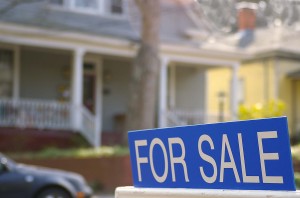During the past four months, the housing market has experienced a steady decline in real property values. Form New York to Los Angeles, mortgage lenders approved fewer mortgages in comparison with the same time period last year. Also, potential buyers became hesitant in reaction to the ongoing domestic economic development. This combination of factors helped to create the perfect environment for a double-dip recession in the housing market.

A double-dip recession is an economic term used to indicate continuation of negative GDP growth after a limited period of growth. For real estate, double-dip recession translates into declining real property values after two financial quarters of rising real estate values.
On May 31st of 2011, Standard & Poor’s released its Case-Shiller Home Price Indices Report which showed a decline of 4.2% in the first quarter of 2011 following 3.6% decline in the fourth quarter of 2010 (Guarino and Blitzer 2011). Economists attribute the double decline on falling sales and excess supply. Some economists estimate that 1.5 million homes are vacant without offers (Kim 2011). This number amounts to almost a year worth of real estate demand.
Foreclosures have added to the ongoing problem. Although the overall number of foreclosures has declined, many homeowners are still struggling to pay their monthly mortgage because of declining income and limited job opportunities. In addition, about 12% of the current work force is underemployed (Munro 2011). This translates into chaos as homeowners can’t earn enough to cover their mortgage and living expenses, which all leads to the creation of vicious cycle of downtrend.
Moreover, the current problems of European Union (EU) have been adding to the many troubles of U.S. housing market. European investors have been real property within the U.S. during the Great Recession (Gopal 2008). They brought much needed capital to the U.S. markets. Currently, as Europeans struggle to balance their national budgets and the joint budget of EU, European investment in U.S. properties have been steadily declining.
In conclusion, a good housing market is essential for the American economy. The latest trends within the real estate market will cause a decline in U.S. recovering GDP. It is imperative for policy makers to enact a stimulus package in favor of the real estate industry before this vicious cycle of decline gains any more steam.
Works Cited:
- Gopal, Prashant. “Foreign investors love U.S. real estate.” Businessweek. January 28, 2008. http://www.businessweek.com/the_thread/hotproperty/archives/2008/01/foreign_investors_love_us_real_estate.html (accessed June 22, 2011).
- Guarino, David R., and David Blitzer. “National Home Prices Hit New Low in 2011 Q1.” Standard and Poor’s. May 31, 2011. http://www.standardandpoors.com/servlet/BlobServer?blobheadername3=MDT-Type&blobcol=urldocumentfile&blobtable=SPComSecureDocument&blobheadervalue2=inline%3B+filename%3Ddownload.pdf&blobheadername2=Content-Disposition&blobheadervalue1=application%2Fpdf&blo (accessed June 22, 2011).
- Kim, Susanna. “Home Prices Double Dip to Levels Before Housing Bubble Burst.” ABC News. May 31, 2011. http://abcnews.go.com/Business/housing-prices-double-dip-downward-spiral/story?id=13723919 (accessed June 22, 2011).
- Munro, Neil. “Federal data shows troubling unemployment, underemployment trends.” The Daily Caller. June 10, 2011. http://dailycaller.com/2011/06/10/federal-data-shows-troubling-unemployment-underemployment-trends/ (accessed June 22, 2011).
Contributor, designer & admin for JohnHart Gazette.
